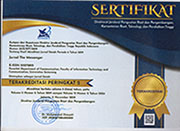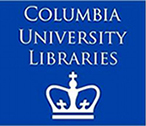Redefining Immediacy for Email Satisfactory Communication: South-East Nigerian Lecturers Perspectives
Abstract
Notwithstanding the empirical evidence that Nigerian academic staff utilized email as one of asynchronous virtual communications, recent studies pointed that low productivities were still witnessed by them due to email inability of giving them timely responses as viable means of communication. Therefore, this study was necessitated for redefining immediacy effects towards reaching email satisfactory communication among South-East Nigerian academic staff. Qualitative investigative study via case study was conducted towards soliciting their views on how to redefine immediacy for email satisfactory communication. The major findings of the study demonstrated that effective internet availability and affordable subscriptions, homophilous patterns of communications, content structure strategy, enhancing regularly email checking awareness, and power supply availability were the immediate remedies for achieving email satisfactory communication. The study eventually recommended that these factors should be taken into considerations by them towards attaining email satisfactory communication and in other asynchronous virtual communication mediums.
Keywords
Full Text:
PDFReferences
Adetunji, A. T., & Adetunji, A. V. (2015). Deregulation Policy: Impact on Nigerian Universities. International Journal in Management and Social Science, 3(8), 313 321.
Al Ghamdi, A., Samarji, A., & Watt, A. (2016). Essential considerations in distance education in KSA: Teacher immediacy in a virtual teaching and learning environment. International Journal of Information and Education Technology, 6(1), 17.
Anasi, S. N., Ukangwa, C. C., & Fagbe, A. (2018). University libraries-bridging digital gaps and accelerating the achievement of sustainable development goals through information and communication technologies. World Journal of Science, Technology and Sustainable Development, 15(1), 13 25.
ASUU (2016). Facts and figures: real reasons behind ASUU strike (November 20, 2016) http://www.naijaperminute.com.ng/2016/11/20/facts-figures-real-reasonsbehind-asuu-strike. (n.d.).
Baker, L. R., & Oswald, D. L. (2010). Shyness and online social networking services. Journal of Social and Personal Relationships, 27(7), 873 889.
Bankole, O. M. (2013). The use of internet services and resources by scientists at Olabisi Onabanjo University, Ago Iwoye, Nigeria. Program, 47(1), 15 33.
Bi, N., Fussell, S. R., & Birnholtz, J. (2014). To be like you to be liked by you: cultural effects on adjusting awareness information gathering behavior. In Proceedings of the 5th ACM international conference on Collaboration across boundaries: culture, distance & technology (pp. 31 40). ACM.
Bryman, A., & Bell, E. (2015). Business research methods. Oxford University Press, USA.
Creswell, J. W. (2009). Research design: Qualitative, quantitative, and mixed methods approaches (Vol. 4). Sage Thousand Oaks, CA.
Gibbs, G. R. (2018). Analyzing qualitative data (Vol. 6). Sage.
Harding, J. (2018). Qualitative data analysis: From start to finish. SAGE Publications Limited.
Jumare, M. A., Tahir, S. M., & Hamid, A. T. (2017). The use of ICT in Nigerian universities: A study of Kaduna State University, Kaduna. International Journal of Advanced Research in IT and Engineering, 6(7), 1 12.
Kelley, S., & Autman, H. (2014). Effective Computer-Mediated Business Communication: Fostering Immediacy. The Journal of Research in Business Education, 56(2), 48.
Lune, H., & Berg, B. L. (2016). Qualitative research methods for the social sciences. Pearson Higher Ed.
Mukoroi, A. S. (2013). Improving industrial harmony and staff performance in a school organization through effective communication. International Journal of Scientific Research in Education, 6(3), 263 270.
Odediran, S. J., Gbadegesin, J. T., & Babalola, M. O. (2015). Facilities management practices in the Nigerian public universities. Journal of Facilities Management, 13(1), 5 26.
Omeluzor, S. U., Akibu, A. A., & Akinwoye, O. A. (2016). Students perception, use and challenges of electronic information resources in Federal University of petroleum resources Effurun Library in Nigeria. Library Philosophy and Practice (E-Journal), 1428.
Qu, S. Q., & Dumay, J. (2011). The qualitative research interview. Qualitative Research in Accounting & Management, 8(3), 238 264.
Rubin, H. J., & Rubin, I. S. (2011). Qualitative interviewing: The art of hearing data. Sage.
Sarapin, S. H., & Morris, P. L. (2015). Faculty and Facebook friending: instructor student online social communication from the professor s perspective. The Internet and Higher Education, 27, 14 23.
Short, J., Williams, E., & Christie, B. (1976). The social psychology of telecommunications. John Wiley& Sons.
Song, J. H., Hollenbeck, C. R., & Zinkhan, G. M. (2015). Managing Interactive Communications with Customers: The Effects of Social Presence Cues, Personalization, the Speed of Feedback and Situation. In Proceedings of the 2007 Academy of Marketing Science (AMS) Annual Conference (pp. 296 299). Springer.
Sukmono, F. G., & Junaedi, F. (2019). Citizen Journalism and Online Community Media: A Case Study of pwmu. co. Jurnal The Messenger, 11(2), 198 208.
Tiwari, S. K. (2016). A Study on Impact of ICT on Library and Information Services. International Journal of Recent Advances in Engineering & Technology, 4(1), 26 31.
Victor, A. A., & Bolanle, R. R. (2017). Extent of Information and Communication Technology (ICT) Utilization for Students Learning in Tertiary Institutions in Ondo State, Nigeria. Online Submission, 3(3), 2369 2376.
Walkem, K. (2014). Instructional immediacy in elearning. Collegian, 21(3), 179 184.
Wiener, M., & Mehrabian, A. (1968). Language within language: Immediacy, a channel in verbal communication. Ardent Media.
Zinaida, R. S., & Havivi, S. L. (2019). Understanding the Communication Strategy of Women s Rights Protection in the Digital Era through Website. Jurnal The Messenger, 11(2), 244 256.
DOI: http://dx.doi.org/10.26623/themessenger.v12i1.1583
Refbacks
- There are currently no refbacks.
Copyright (c) 2020 Jurnal The Messenger
View My Stats [Jurnal The Messenger] is an International Scientific Journal, Published by the Department of Communication, Faculty of Information Technology and Communication, Universitas Semarang (Central Java, Indonesia). It is licensed under a Creative Commons Attribution 4.0 International License.



_11.jpg)




_BARCODE.jpg)
_BARCODE1.jpg)


5.png)










2.png)





